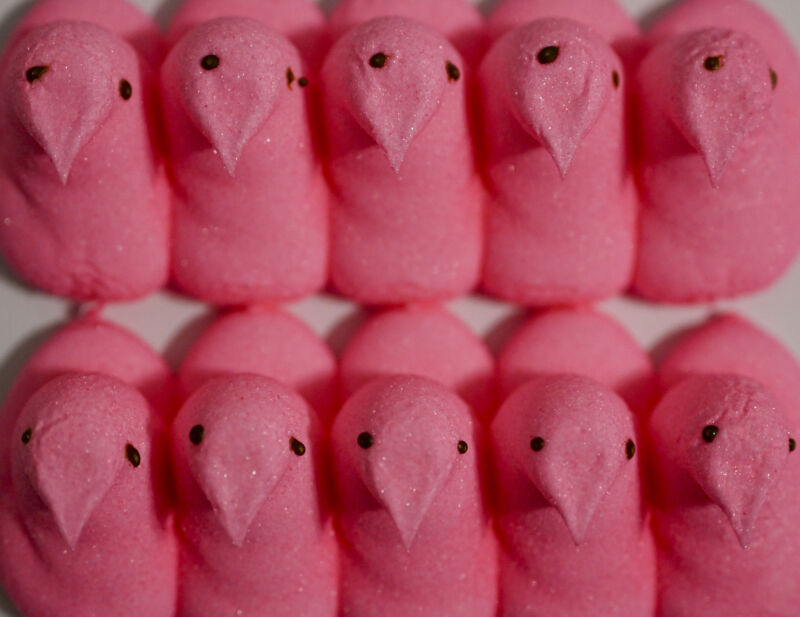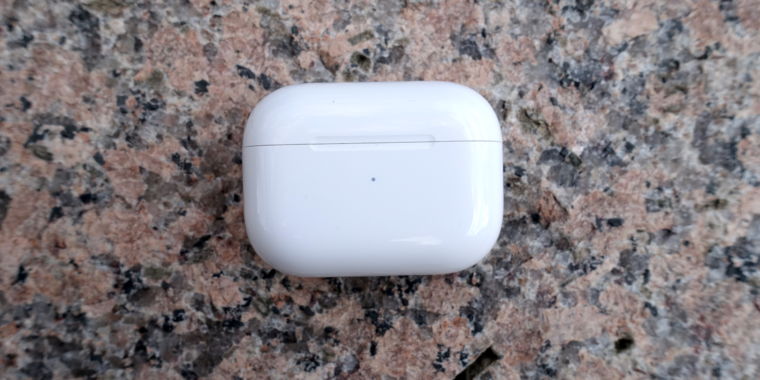
Last weekend, California outlawed a common red food dye that is otherwise deemed safe by the Food and Drug Administration—the first such ban in the country and one that puzzlingly comes over three decades after the FDA determined the dye causes cancer in rats and banned it from lipsticks and other cosmetics, but not foods.
The dye is FD&C Red No. 3, also known as red dye No. 3. Today, it is found in thousands of food products—from Brach’s Candy Corn and varieties of Nerds, Peeps, Pez, candy canes, Fruit by the Foot, to Entenmann’s Little Bites Mini Muffins, Betty Crocker mashed potatoes, fruit cocktail, PediaSure nutritional shakes, and MorningStar Farm’s veggie bacon strips.
But, back in 1990, the FDA carefully reviewed decades’ worth of animal studies on red dye No. 3 and determined that “FD&C Red No. 3 has been shown to induce cancer in appropriate tests,” and is therefore “unsafe for use in externally applied drugs and externally applied cosmetics and cannot be listed.” Even though the risk appeared small, the agency’s decision hinged on the Delaney Clause of 1958, which requires the FDA to ban any food additive that is shown to induce cancer in humans or animals.
As the FDA described it at the time, because of that clause “products shown to have carcinogenic effect in laboratory tests, no matter how small, cannot be approved for use by the FDA.”
But, due to bureaucratic quirks, the FDA’s determination only applied to cosmetics and externally applied products—even though the animal studies that proved a link to cancer were based on feeding rats the dye, not applying it to their skin or fur. The FDA had determined back in 1969 that, based on data at that time, red dye No. 3 was safe to add to foods, dietary supplements, and ingested drugs. As such, the agency permanently listed it as a safe food additive.
Soon after, makers of personal care products also wanted to get permanent approval to add red dye No. 3 in their products. At that point, the dye was only “provisionally” listed for external use, and the industry needed to conduct scientific studies to prove to the FDA that it was safe in those products, too. But, in 1977, as that work was ongoing, the FDA revised its requirements, forcing the industry to conduct new chronic toxicity studies—the studies that would show increased rates of cancer in rats. Between 1977 and 1990, the FDA granted the industry numerous extensions to produce scientific data showing red dye No. 3 was safe—but they ultimately couldn’t.
Dye data
The FDA’s determination that red dye No. 3 causes cancer in rats was largely based on just two industry studies. The studies followed rats chronically fed red dye No. 3, at various dosages, for up to 28 months, some starting in utero. In the first study, red dye No. 3 made up 0.1, 0.5, or 1 percent of the test rats’ diets, alongside two control groups of rats that got no dye. The industry scientists reported no differences in the groups, but the FDA conducted its own microscopic examination of the animals’ tissues. This revealed statistically significant, higher incidences of male rats with thyroid tumors and cancers, the FDA concluded.
In the second study, there were just two groups of rats—a control group and one fed a diet that was 4 percent red dye No. 3—a high dose. Again, the FDA found male rats had higher rates of thyroid tumors (14 of 68 rats fed the dye (20.6 percent) vs 1 of 68 control rats (1.5 percent)). The rate of carcinomas was also higher in the male rats fed the dye (7.5 percent vs 1.5 percent). Overall, the FDA found the male rats fed the dye had a higher rate of tumors and cancers than the control rats (26.5 percent vs 2.9 percent).
At the FDA’s request, the National Toxicology Program conducted a peer review of the studies and concluded, like the FDA, that red dye No. 3 is an animal carcinogen.
After the two damning rat studies, industry researchers conducted several other studies that attempted to identify the mechanism by which red dye No. 3 was causing the tumors—and argue why said mechanism wouldn’t be relevant to humans. But the studies failed to prove any such mechanism. The FDA determined in 1990 that the mechanism remained unknown, but “that FD&C Red No. 3 causes cancer in animals is unrefuted.”








